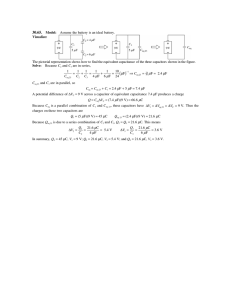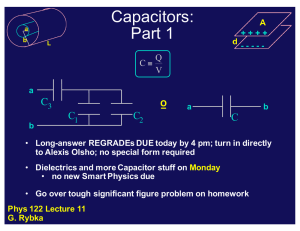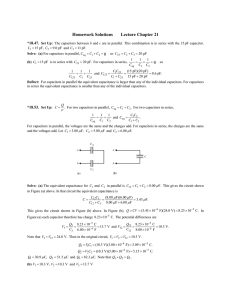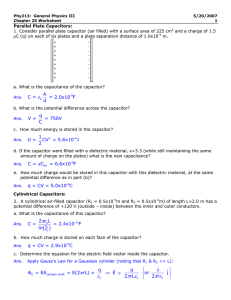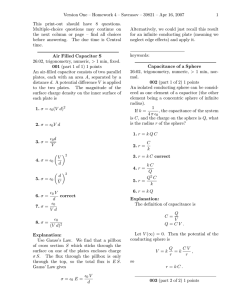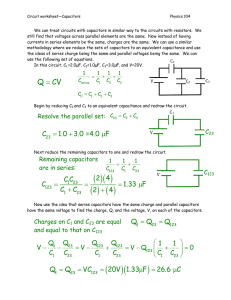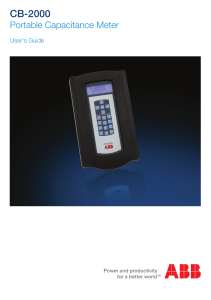A battery is used to charge a parallel combination of two identical
advertisement
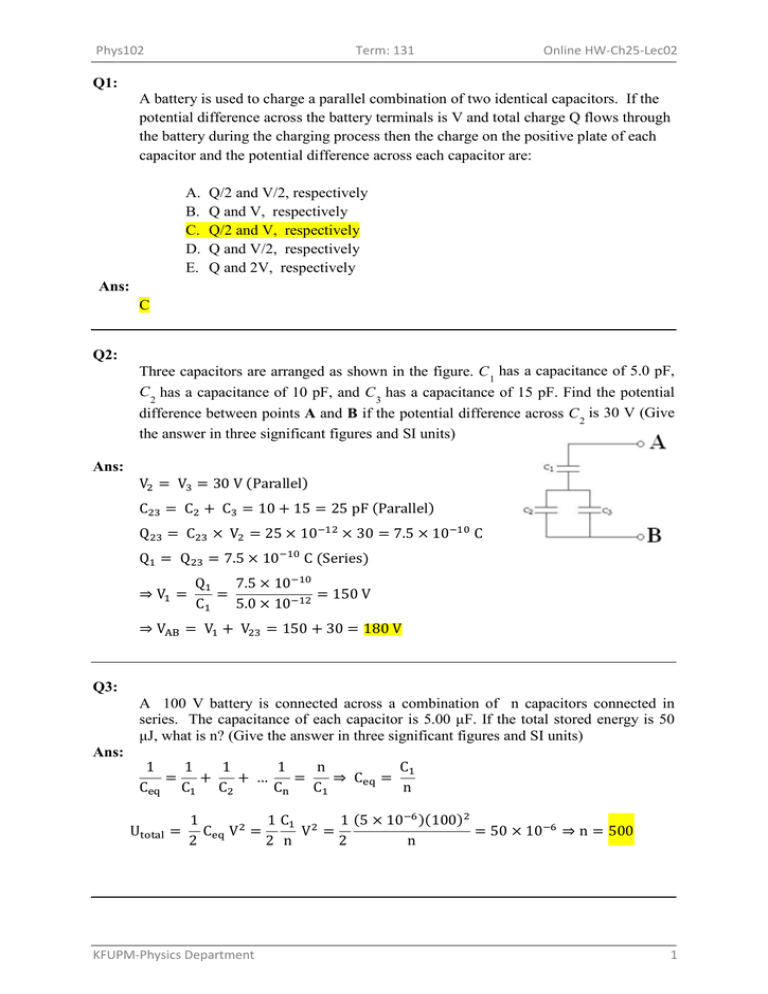
Phys102 Term: 131 Online HW-Ch25-Lec02 Q1: A battery is used to charge a parallel combination of two identical capacitors. If the potential difference across the battery terminals is V and total charge Q flows through the battery during the charging process then the charge on the positive plate of each capacitor and the potential difference across each capacitor are: A. B. C. D. E. Q/2 and V/2, respectively Q and V, respectively Q/2 and V, respectively Q and V/2, respectively Q and 2V, respectively Ans: C Q2: Three capacitors are arranged as shown in the figure. C 1 has a capacitance of 5.0 pF, C 2 has a capacitance of 10 pF, and C 3 has a capacitance of 15 pF. Find the potential difference between points A and B if the potential difference across C 2 is 30 V (Give the answer in three significant figures and SI units) Ans: V2 = V3 = 30 V (Parallel) C23 = C2 + C3 = 10 + 15 = 25 pF (Parallel) Q23 = C23 × V2 = 25 × 10−12 × 30 = 7.5 × 10−10 C Q1 = Q23 = 7.5 × 10−10 C (Series) ⇒ V1 = Q1 7.5 × 10−10 = = 150 V C1 5.0 × 10−12 ⇒ VAB = V1 + V23 = 150 + 30 = 180 V Q3: A 100 V battery is connected across a combination of n capacitors connected in series. The capacitance of each capacitor is 5.00 μF. If the total stored energy is 50 μJ, what is n? (Give the answer in three significant figures and SI units) Ans: 1 1 1 1 n C1 = + + … = ⇒ Ceq = Ceq C1 C2 Cn C1 n Utotal = 1 1 C1 2 1 (5 × 10−6 )(100)2 Ceq V 2 = V = = 50 × 10−6 ⇒ n = 500 2 2 n 2 n KFUPM-Physics Department 1



